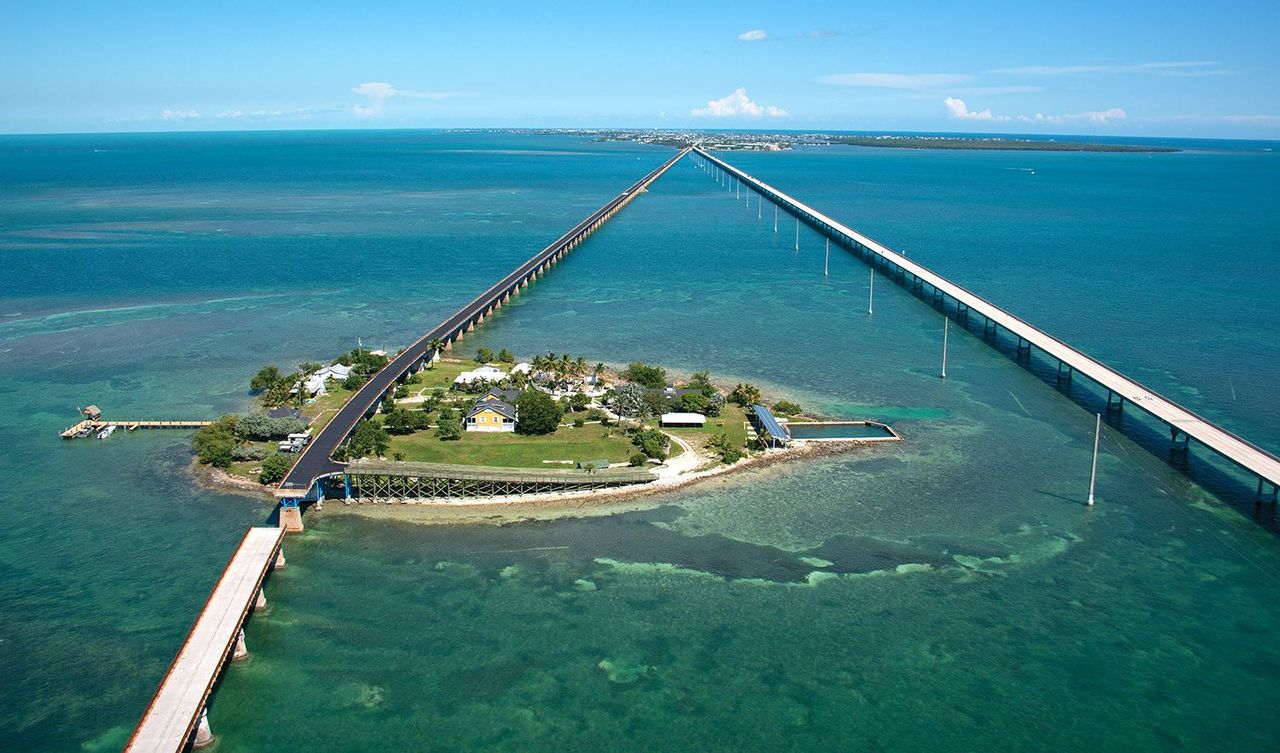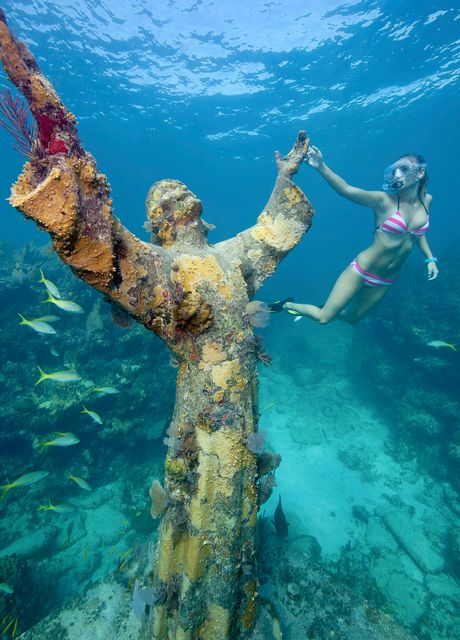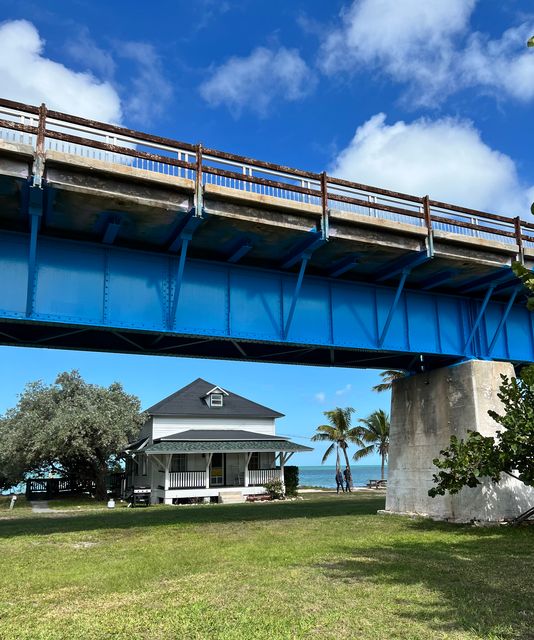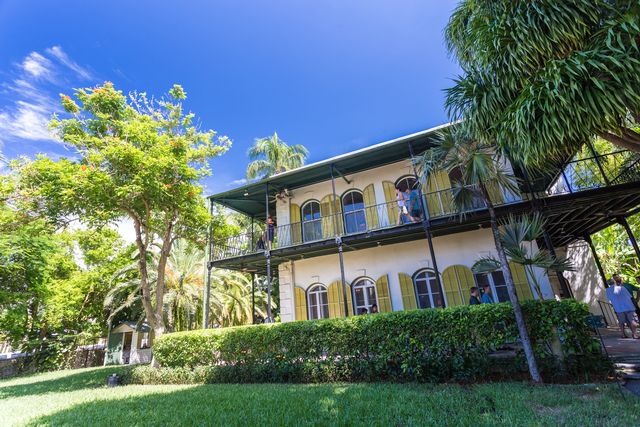Present-Day Sites Bring Keys’ Past to Life
During the Florida Keys’ colorful two-century history, the island chain at the southern tip of Florida has been shaped by individualists, visionaries, shipwreck salvagers, presidents and creative spirits. Today visitors can explore scores of sites that recall their presence and showcase the region’s rich heritage.
For example, the Keys are the site of the United States’ first undersea park, named for newspaperman and conservationist John Pennekamp. Dedicated in 1960, John Pennekamp Coral Reef State Park can be found at mile marker 102.5 in Key Largo. Covering 70 nautical square miles, it’s famed for glass-bottom boat and snorkel tours of the Florida Keys’ coral reef and dive and snorkel tours to the Christ of the Deep statue.
Nearby at mile marker (MM) 104 is a favorite site for movie buffs: the Caribbean Club Bar, a lively waterfront spot established in 1938 that was one of the locations for the 1948 Humphrey Bogart film classic “Key Largo.”
Echoes of the Keys’ “wrecking” or shipwreck salvage heyday infuse Indian Key Historic State Park, a small island off mile marker 78.5 in Islamorada. Currently accessible only by kayak, it was developed by wrecker John Jacob Housman in the early 1800s. Once the Keys’ second-largest community, in 1840 its buildings were burned to the ground during a Seminole Indian raid. The remains offer haunting hints of the past.
Dolphins have long been part of the Keys’ natural world. Dolphin Research Center, at MM 59 on Grassy Key, dates from the 1940s when fisherman Milton Santini brought dolphins to his property. His favorite, named Mitzi, later starred (with other dolphins) in the early 1960s film “Flipper.”
In 1984 Jayne Shannon Rodriguez and Armando “Mandy” Rodriguez took on the facility and founded the nonprofit Dolphin Research Center. Providing forever homes for rehabilitated animals, it’s renowned for pioneering dolphin research and educational programs that inspire marine mammal conservation. DRC attracts visitors from around the world to see and learn about its family of dolphins and sea lions.
In Marathon, Crane Point Hammock Museum & Nature Trail is among the Keys’ most important archaeological sites. The 63.5-acre tract at MM 50.5 contains evidence of prehistoric Indian artifacts and was the site of an early Bahamian village. Its Adderley House, a classic Bahamian-style home built in 1904, is the oldest Keys house outside Key West. The must-explore spot also features a museum, lagoon, plant nursery and several nature trails.
It’s a “bucket list” experience to drive across the Seven Mile Bridge, one of the world’s longest segmental bridges and the centerpiece of the iconic Florida Keys Overseas Highway. The majestic span, stretching above the Atlantic Ocean and Gulf of Mexico, connects Marathon to the Lower Keys.
Paralleling it is the Old Seven Mile Bridge, part of the Florida Keys Over-Sea Railroad that was conceived by visionary Henry Flagler and completed in 1912. Called the eighth wonder of the world, the railroad connected the Keys with each other and mainland Florida for the first time.
Beneath the old bridge at MM 44.8 lies the tiny island of Pigeon Key, a former work camp for laborers constructing the bridge. Now featuring restored buildings and a museum, Pigeon Key offers visitors a journey back in time. It’s accessible by tram or by walking or bicycling a refurbished section of the Old Seven Mile Bridge.
On Big Pine Key is the historic 2-acre fruit farm Grimal Grove, established by 1950s-era inventor and recluse Adolf Grimal, who amassed hundreds of rare fruit trees and created raised garden beds and waterways for irrigation. In 2013 Patrick Garvey and Growing Hope Initiative restored the property as a tropical fruit park — now billed as the continental United States’ first and only breadfruit grove. The property is located off MM 30.5 at 258 Cunningham Lane. Visitors can tour by appointment or on Saturday mornings, sampling sweet and sour exotic fruits (including breadfruit) and learning Grimal’s story.
History fans in Key West can tour both the Harry S. Truman Little White House Museum, Florida’s only presidential museum, and the Ernest Hemingway Home & Museum where the legendary author lived and wrote for most of the 1930s.
Truman spent approximately six months of his 1945-53 presidency in Key West, running the country from the roomy “Little White House” at 111 Front St. Contemporary museum visitors will discover items including the original piano and poker table used by the former commander in chief.
Hemingway’s Spanish Colonial home provides a glimpse into American literary history. In the second-story studio on the 907 Whitehead St. property, he wrote some of his most notable works including “To Have and Have Not,” a novel set in Depression-era Key West. Dozens of cats roam the grounds, some six-toed and said to be descended from a feline given to Hemingway.
Just across the road at 938 Whitehead St. is the Key West Lighthouse & Keeper’s Quarters. Completed in 1848, the lighthouse guided mariners through local waters until it was decommissioned in 1969. An 88-step spiral staircase leads to an observation platform atop the light, offering a panoramic view. Historic artifacts, photos and journals tell the stories of courageous male and female lighthouse keepers.
About two miles west of Marathon, nestled beneath what is now called the Old Seven Mile Bridge, lies Pigeon Key. A museum on the island chronicles the construction of Henry Flagler’s Over-Sea Railroad. Photo: Andy Newman
The 'Christ of the Deep' statue in the Florida Keys National Marine Sanctuary is submerged in 25 feet of water at Key Largo Dry Rocks. Photo by Stephen Frink
One of the restored historic structures on Pigeon Key is seen under the newly renovated Old Seven Mile Bridge. Photo by JoNell Modys
Visitors explore the Ernest Hemingway Home & Museum in Key West where the legendary author lived from 1931 to 1939. Photo by Laurence Norah





